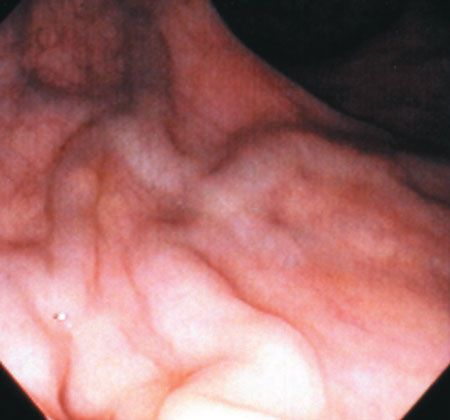- Clinical Technology
- Adult Immunization
- Hepatology
- Pediatric Immunization
- Screening
- Psychiatry
- Allergy
- Women's Health
- Cardiology
- Pediatrics
- Dermatology
- Endocrinology
- Pain Management
- Gastroenterology
- Infectious Disease
- Obesity Medicine
- Rheumatology
- Nephrology
- Neurology
- Pulmonology
Rectal Varices
Loose, irregular bowel movements were the complaint of a 56-year-old man. He underwent colonoscopic examination. The dilated vascular structures shown are rectal varices: portosystemic collateral veins that develop with portal hypertension.
Loose, irregular bowel movements were the complaint of a 56-year-old man. He underwent colonoscopic examination. The dilated vascular structures shown are rectal varices: portosystemic collateral veins that develop with portal hypertension. Vascular channels develop to decompress the higher-pressure portal system by shunting blood flow to the lower-pressure systemic venous system. The collateral flow involves the superior hemorrhoidal vein of the portal system and the middle and inferior hemorrhoidal veins of the systemic circulation.
Gastroesophageal varices are a more widely recognized path of collateral flow that develops with portal hypertension. Massive rectal bleeding has been reported from rectal varices, although it appears less frequently than bleeding from gastroesophageal varices.
Rectal varices must be distinguished from hemorrhoids, which represent prolapsed vascular ectatic vessels or cushions that communicate with the hemorrhoidal plexus. There has been no documentation of direct connection between hemorrhoids and either the systemic or portal veins.
In the United States, alcohol is the most common cause of liver cirrhosis and portal hypertension. Although this patient denied alcohol abuse, he mentioned that he enjoyed wine with dinner. On further questioning, the patient admitted to having consumed 1 to 1.5 L of wine each evening for many years. This had resulted in liver disease and portal hypertension, manifested as rectal varices.

